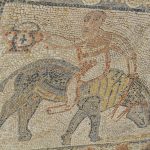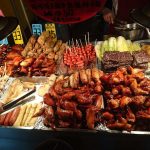Traditional Vietnamese Customs and Habits
In the course of development, Vietnamese customs and habits are indispensable spiritual field in Vietnamese culture. It is the original cultural values of the country strongly that define the identity and the long-lastingness of culture in Vietnam. In the entire history of Vietnam, Vietnamese culture is the combination of native culture, cultural exchange with China, Asian region and western countries. However, with a firm native culture, Vietnamese people keep their culture away from being assimilation, and “Vietnamizing” those cultural features instead. Vietnam culture is characterized by a series of unique customs and habits such as worshiping ancestors, chewing betel, and other customs in traditional ceremonies like funeral ceremony, long-life ceremony, etc. These customs and habits are associated with community of villages, communes. Vietnam is a country of festivals, especially in spring. There are several famous festivals featuring Vietnamese culture like Tet Nguyen Dan, Tet Nguyen Tieu, Tet Han Thuc, Tet Doan Ngo, Mid-Autumn Festival, etc. Yet, customs and habits of Vietnamese people vary from region to region, and ethnic group to ethnic group.
Worship of Ancestor Custom

Vietnam-Altar
A very popular belief among Vietnamese is the custom of the ancestor cult. In every household, an ancestor altar is installed in the most solemn location.
Vietnamese believe that the soul of a dead person, even if dead for many generations, still rests along with their descendants on earth. The dead and living persons still have spiritual communion; in everyday life, people must not forget that what they enjoy and how they feel is the same for their dead relatives.
On the anniversary of an ancestor’s death, descendants and relatives unite and prepare a feast to worship the dead people and to ask for health and happiness for themselves. From generation to generation, ancestor worshiping customs have been religiously preserved. There are some small variations between those customs among the many Vietnamese ethnic groups, but the common theme of fidelity and gratitude towards the ancestors remains.
On the last day of every lunar year, an announcing cult, cung tien thuong, is performed to invite the dead forefathers to return home to celebrate Tet holidays with their families. During the last days before Tet, all family members visit their ancestors’ graves; they clean and decorate the graves, in the same manner that the livings clean and decorate their houses to welcome the New Year.
Wedding Ceremony

Wedding Ceremony
Getting married is an important event in a Vietnamese’s life. The procedure of the ancient wedding ceremony was very complicated. Current wedding ceremony procedures include the following steps: the search for a husband or wife, the proposal, the registration, and finally the wedding.
Depending on habits and customs of specific ethnic groups, marriage includes various steps and related procedures, but generally there are two main ceremonies:
Le an hoi (betrothal ceremony): Some time before the wedding, the groom and his family visit the bride and her family with round lacquered boxes known as betrothal presents composed of gifts of areca nuts and betel leaves, tea, cake, fruits, wines and other delicacies covered with red cloth and carried by unmarried girls or boys. Both families agree to pick a good day for wedding.
Le cuoi (wedding ceremony): Guests would be invited to come to join a party and celebrate the couple’s happiness. The couple should pray before the altar asking their ancestors for permission for their marriage, then to express their gratitude to both groom’s and bride’s parents for raising and protecting them. Guests will share their joy at a party later.
Funeral Ceremony

Funeral Ceremony
Formerly funeral ceremonies went as following: the body was washed and dressed; then a le ngam ham, or chopstick, was laid between the teeth and a pinch of rice and three coins were dropped in the mouth.
Then the body was put on a grass mat laid on the ground according to the saying “being born from the earth, one must return back to the earth.” The dead body was enveloped with white cloth, le kham liem, and put into the coffin, le nhap quan. Finally, the funeral ceremony, le thanh phuc, was officially performed.
The deceased person’s sons, daughters, and daughters-in-law had to wear coarse gauze turbans and tunics, and hats made of straw or of dry banana fiber. The deceased person’s grandchildren and relatives also had to wear mourning turbans. During the days when the dead were still laid out at home, the mourning went on with worshiping meals and mourning music. Relatives, neighbors, and friends came to offer their condolences.
Nowadays, mourning ceremonies follow new rituals which are simplified; they consist of covering and putting the dead body into the coffin, the funeral procession, the burial of the coffin into the grave, and the visits to the tomb. The deceased person’s family members wear a white turban or a black mourning band.
The date and time for the funeral procession, le dua tang, must be carefully selected. Relatives, friends, and descendants take part in the funeral procession to accompany the dead along the way to the burial ground. Votive papers were dropped along the way. At the grave site, the coffin is buried and covered. After three days of mourning, the family visits the tomb again, le mo cua ma or worship the opening the grave; after 49 days, le chung that, the family stops bringing rice for the dead to the altar. And finally, after 100 days, the family celebrates tot khoc, or the end of the tears. After one year is the ceremony of the first anniversary of the relative’s death and after two years is the ceremony of the end of mourning.
Betel and Areca Nuts

Betel and Areca Nuts
According to legends, chewing quid of betel and areca has been a custom since the Hung Vuong period and is connected to the antique legend of betel and areca.
A quid of betel, also called trau, is composed of four elements: an areca leaf (sweet taste), betel bark (hot taste), a chay root (bitter taste), and hydrated lime (pungent taste). The custom of chewing betel nut is unique to Vietnam. Old health books claim that “chewing betel and areca nut makes the mouth fragrant, decreases bad tempers, and makes digesting food easy”. A quid of betel makes people become closer and more openhearted. At any wedding ceremony, there must be a dish of betel and areca nut, which people can share as they enjoy the special occasion.
During festivals or Tet Holidays, betel and areca nut is used for inviting visitors and making acquaintances. Sharing a quid of betel with an old friend is like expressing gratitude for the relationship. A quid of betel and areca nut makes people feel warm on cold winters days, and during funerals it relieves sadness. Betel and areca nuts are also used in offerings. When Vietnamese people worship their ancestors, betel and areca nut must be present at the altar. Nowadays, the custom of chewing betel remains popular in some Vietnamese villages and among the old.
Let’s not forget to mention thuoc lao or strong tobacco. For women, betel can initiate various feminine conversation, but for men, thuoc lao is related to their joyfulness as well as the sadness in their lives. Peasants always carry their dieu cay (pipe for smoking while ploughing the rice fields).


















